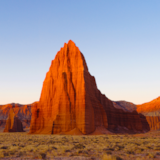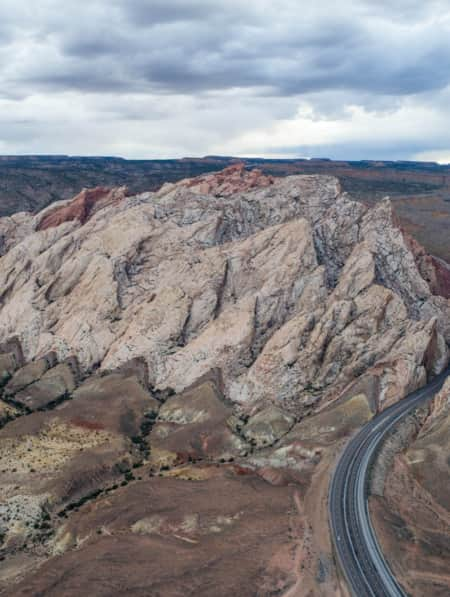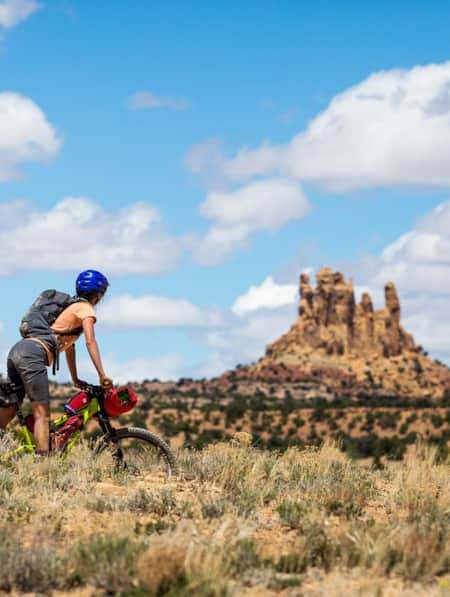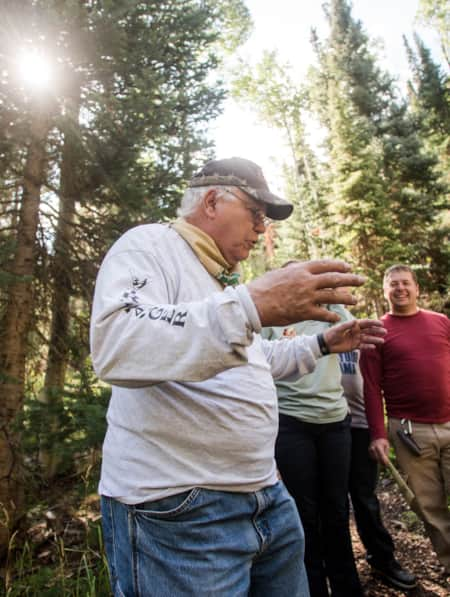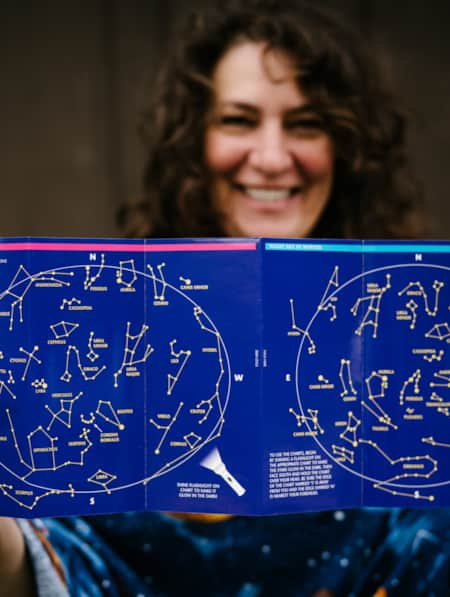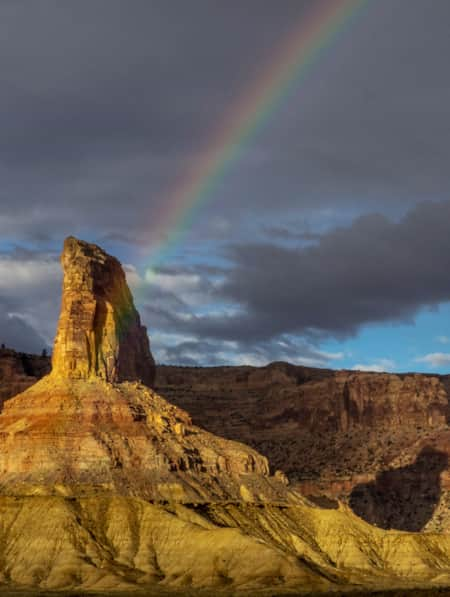Off-Roading in Central Utah: Exploring the OHV Trails of the Carbon Corridor
As the sport of off-roading explodes across Utah, the Carbon Corridor features some of the state’s best options, with challenging terrain, incredible views — and few people.

Mandie Watson Kaneko bursts with enthusiasm as she tells tales of her family’s off-road adventure trips in Utah. For almost two decades, they have taken their dirt bikes, ATVs and other off-road vehicles to explore some of Utah’s most beautiful terrain. The long-time enthusiast has not only traveled throughout much of the state to explore the off-road trails, but she’s also helped organize trips with bigger groups to help introduce more people to the sport. One of her favorite destinations is in the less-traveled part of Southeastern Utah that’s known as the Carbon Corridor.
“It’s a part of the state that’s still being discovered,” Watson Kaneko says. “Riding dirt bikes and ATVs is the most amazing thing. We love doing it, and we love introducing people to it while getting to see this area.”
The Carbon Corridor, formerly known as Castle Country, includes a wide swath of Carbon and Emery counties, and is located about two hours southeast of Salt Lake City. You’ll find the towns of Helper, Price and Wellington as you travel along State Route 191, but the real draw of the region lies in the incredible, rugged terrain, which includes the San Rafael Swell, the Manti LaSal National Forest and Nine Mile Canyon, among other natural wonders.
And while you can do plenty of exploring on foot or in your car or truck, you’ll only be touching the surface without spending some time leaving the roads in an off-highway vehicle. “You need to get into the backcountry to understand what makes this country great,” Watson Kaneko says.
Thankfully, the region has embraced a wide variety of off-road travel options, creating hundreds of miles of trails. They’re suited for everyone, from the first-time ATV rider to the adrenaline-pumped dirt biker looking for the most challenging terrain around. With marked trails, maps and an infrastructure to support OHVs, the Carbon Corridor has managed to become both a bucket-list destination for motorsports enthusiasts while still offering plenty of room to give people the feeling that they have the place to themselves. For ATV enthusiasts, it’s the perfect blend that keeps them coming back again and again.
"You need to get into the backcountry to understand what makes this country great."
– Watson Kaneko

Max Reid Paiute Trail

Stopping for a break at a lake along the Paiute Trail

Paiute Trail
How the Carbon Corridor Became an Adventure Destination
This part of Utah was first settled by Mormon pioneers in the 1800s, but it grew dramatically in the late 1870s with the establishment of coal mines. The demand for miners brought immigrants from around the world to Carbon County. Even today, Carbon County has a much more ethnically and religiously diverse population than the rest of the state.
As the emphasis on coal mining diminished, more people began to take advantage of the region’s natural resources for recreation. They were drawn to the wide variety of terrain to explore, including lush mountain forests, lakes, rivers, desert plateaus, and perhaps the area’s signature geographic feature, the San Rafael Swell.
The Swell, as it’s known locally, is a 2,000-square mile region that features a dome-shaped structure called an anticline, which was pushed up from the surface of the earth 40 to 60 million years ago. Over the ages, flash floods and wind have caused erosion in the sandstone, shale and limestone to create incredible canyons, valleys, gorges and mesas. While you’ll find vistas that hold their own against just about any other part of the state, the area has remained mostly undeveloped — to the benefit of those who are willing to put in the effort to see it.
Going Back in Time
The Carbon Corridor offers visitors a chance to see remnants of long-ago creatures, ancient cultures and the region’s earliest settlers in a truly unique way. This part of Utah is known for its dinosaur bones, and while you probably won’t see any on the trail, you can learn more about them at the Prehistoric Museum in Price. In addition to the skeletal remains of dinosaurs found in the area (including the Utahraptor, Allosaurus and Peloroplites), you can also find exhibits on the first people to make this area home. (It’s also where you can pick up free trail maps of the region). To get a better understanding of where these bones came from, take a trip to the Cleveland-Lloyd Dinosaur Quarry, (now known as Jurassic National Monument) located about 30 miles south of Price, which features the densest concentration of Jurassic bones in the world.
Back on the ATV trails, you can go on your own archeological trip, this time for the remains of the first people to live in this area. You can spend time finding rock artwork, petroglyphs and sculptures carved by ancient cultures throughout the Swell and the surrounding region. You can go ahead and try to interpret the pictures — just keep your hands to yourself. You’ll also find remnants from the early mining culture and Mormon settlers.
But perhaps the most exciting connection to earlier times are the animals that still roam the land. Keep your eyes out for antelopes, bighorn sheep, coyotes and raptors, which all make the region home.
“You’re definitely going to see the wild burros when you’re there,” Watson Kaneko says. “We sometimes see wild horses. It’s a great part of the trip.”

Paiute Trail
Photo: Jim Urquhart

Paiute Trail
Photo: Jim Urquhart

Exploring on Your ATV
It sounds like fun, but where do you start? While there’s an almost endless number of possibilities, Carbon Corridor offers several trail systems. To get things started, explore more than 250 miles of out-and-back and loop routes on the excellent Carbon Corridor Trail System. These trails are accessible from some of the area’s best base camps: Helper, Price, Wellington and Scofield.
The Wasatch Plateau rises to the west of the Carbon Corridor’s main thoroughfare, Highway 6. There, the expansive Arapeen OHV Trail System features more than 350 miles of off-road riding through the Manti La-Sal National Forest. The South Skyline Drive makes up the backbone of the system, stretching 58-miles from Utah Highway 31 to the Fish Lake National Forest boundary.
In the San Rafael Swell, you could spend weeks exploring all the trails. Some of the top picks include the San Rafael Swell Recreation Area, which features OHV trails that will take you through deep canyons and on rocky climbs. You’ll see petroglyphs along the way and even some abandoned uranium mines. Coal Wash and Fix-it Pass are two popular routes, with excellent panoramic views and the chance to see bighorn sheep.
“I love the Devil’s Racetrack there,” Watson Kaneko says. “It’s open to all vehicles, and the sights along the way are amazing.” Other favorite routes will take you to the Swasey Cabin, Slipper Arch and Eagle Arch.
“You can really make it whatever kind of trip you want.” Watson Kaneko says. “Trails are rated like the ski resorts, so you can pick the ones to suit your skill level and interest. If you’ve never done it before, there are lots of guides who will either drive the vehicle for you or lead you along the route. It’s a very welcoming community. People love this sport, and they love to get more people involved.”
You can download a map of all the OHV trails in Emery County to help you start exploring. If you don’t have an ATV of your own, many rental companies can help you with the right vehicle for your trip, including San Rafael ATV Rentals in Castle Dale, Utah.
“The nice thing about this sport is that there is a wide variety of vehicles,” Watson Kaneko says. “If you don’t want to ride a dirt bike, there’s a side-by-side. There is a vehicle you will be comfortable in.”
The Carbon Corridor gives you a chance to experience a part of Utah that few people get to see. It may take a bit more time and effort to get there — but it’s well worth the trip.
What's Nearby
-
Fishing Scofield State Park
Scofield State Park is a peaceful, scenic reservoir with an uncanny ability to produce big fish in quick fashion.
-
Green River State Park
Green River State Park is a great place to begin your adventure on the Green River. If you make the journey you’ll be rewarded with easy access to the river, sheltered campgrounds and picnic areas, a nine-hole golf course, and a new eighteen-basket disc golf course.
-
Helper
Settled in 1881, Helper was named after the team of “helper” coal-powered steam engines that assisted freight trains up the neighboring canyon and over Soldier’s Summit; the city was created because of and for the coal industry. Though the tracks are still integral in the town’s DNA and even more-so, history, its identity has changed.
-
Price
Price sits close to the northern section of the San Rafael Swell, which is home to vast deserts, yawning canyons, and fascinating rock formations. The area is known for its coal mining, as well as its recreational opportunities.
-
San Rafael Swell
San Rafael hikes and bike rides offer unique terrain and jaw-dropping scenery. Learn about the area’s trails and start planning your trip!
